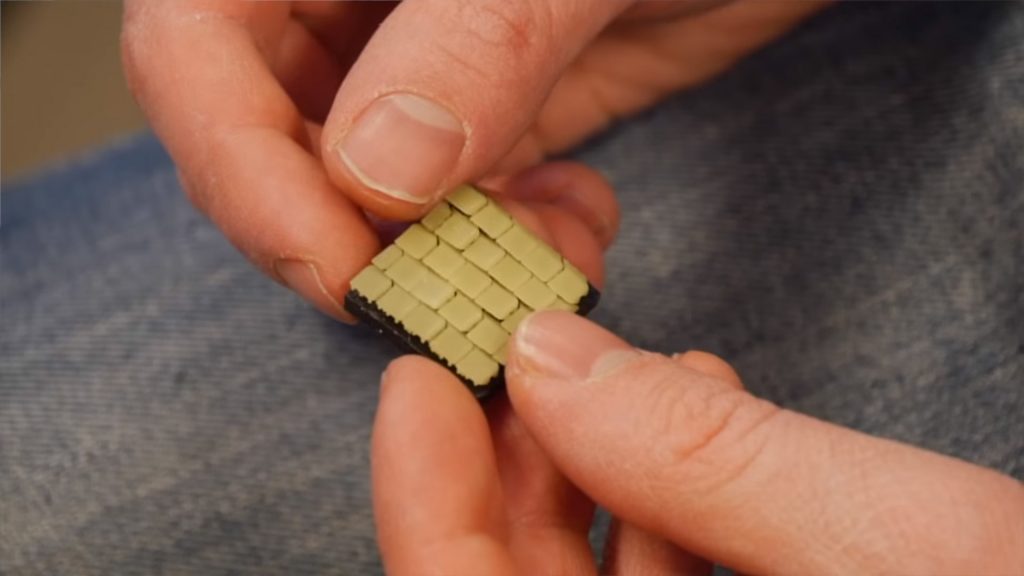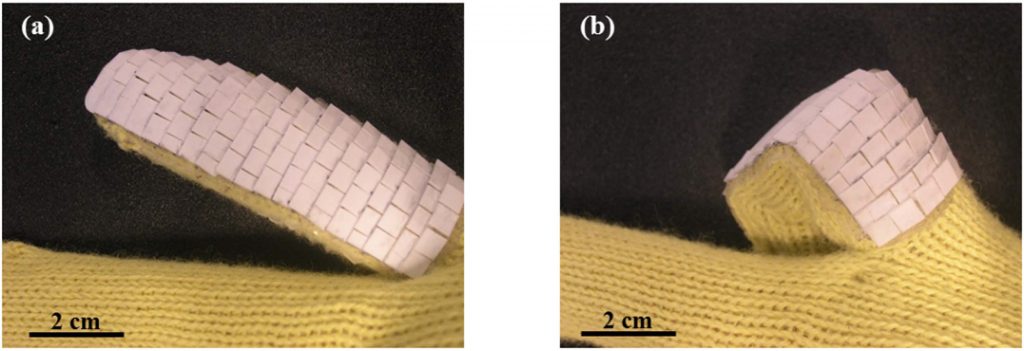Fishing for new materials suitable for creating impenetrable body armor, François Barthelat and his research group at McGill University have encountered the alligator gar – a bony fish that has changed little in the past 100 million years.

Breaking through the scales of a gar fish’s skin typically takes the power of a hacksaw. With the help of computer-aided-design (CAD) and 3D printing, the team are working to replicate the scales and make hard-wearing work gloves.
Making impenetrable fish skin
The secret to the strength of gar fish scales, as in other fish and snakes, is how they overlap. Finding the perfect placing of the small tiles has however been a challenge.
Using a 3D printer, Barthelat and Roberto Martini were able to prototype batches of scales of varying shape and size. Added to a material, and puncture-tested, smaller scales were found to be better at resisting force, and the modified shape resembles a kind of trapezoid.

Initial prototypes were realized in plastic, but now the team are using ceramic scales added to Kevlar fabric.
Starting small to make it big
“If we can solve the issue of bio-inspired design for gloves and the fingers, then we can pretty much handle anything on the body,” explains Barthelat in a interview with Popular Science.
The hope is that the material will eventually reach commercialization, fulfilling a gap in the market experienced by workers handling sharp objects, e.g. recycling waste and garbage.
Superior Gloves, a manufacturer of industrial work gloves based in Ontario, has been working with McGill to test the scales. According the Barthlet the gloves have already passed Superior’s typical assessments.

Nature paves the way
In a similar manner, the U.S. Army has funded similar scale inspired materials research undertaken by MIT’s Institute for Soldier Nanotechnologies and Technion (the Israel Institute of Technology).
Barthelat et al.’s glove research adds to previous work from McGill’s Laboratory for Advanced Materials and Bioinspiration that has also looked at replicating the biological “jigsaw” structure of turtle shells to make stronger materials.
The most recent paper on the research discussed in this article is available open access in the journal of Bioinspiration & Biomimetics.
A further study examining 3D-printing and mechanics of bio-inspired articulated and multi-material structures was co-authored by Michael M.Porter, Nakul Ravikumar, Francois Barthelat, and Roberto Martini in the Journal of the Mechanical Behavior of Biomedical Materials.
Sign up to the 3D Printing Industry newsletter for materials research updates and more news six times per week. All of our best stories can be found on Facebook and Twitter.
Register your skills on our 3D printing jobs site here.
Featured image shows ceramic scales on a Kevlar glove inspired by gar fish. Screen grab via McGill University on YouTube



